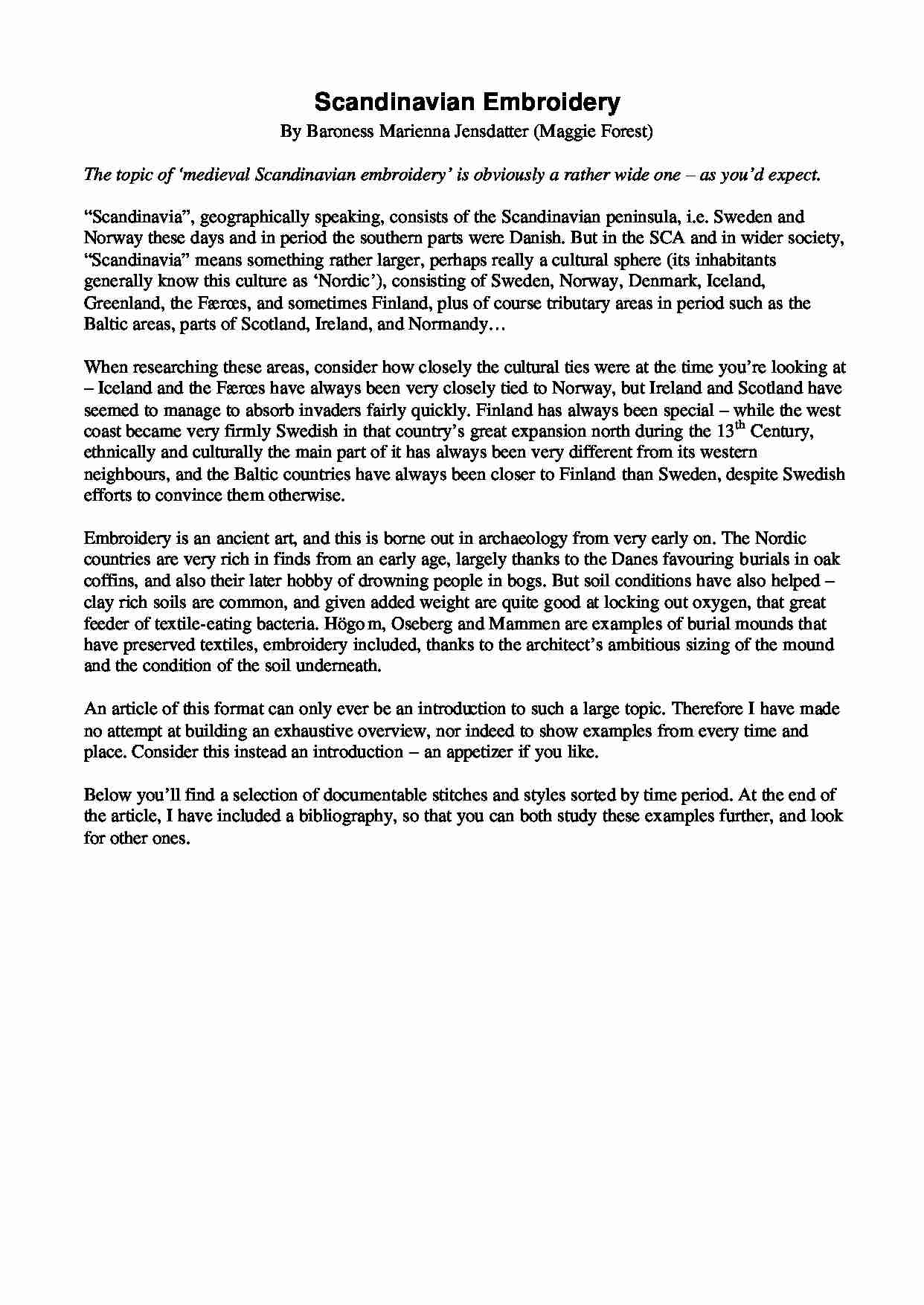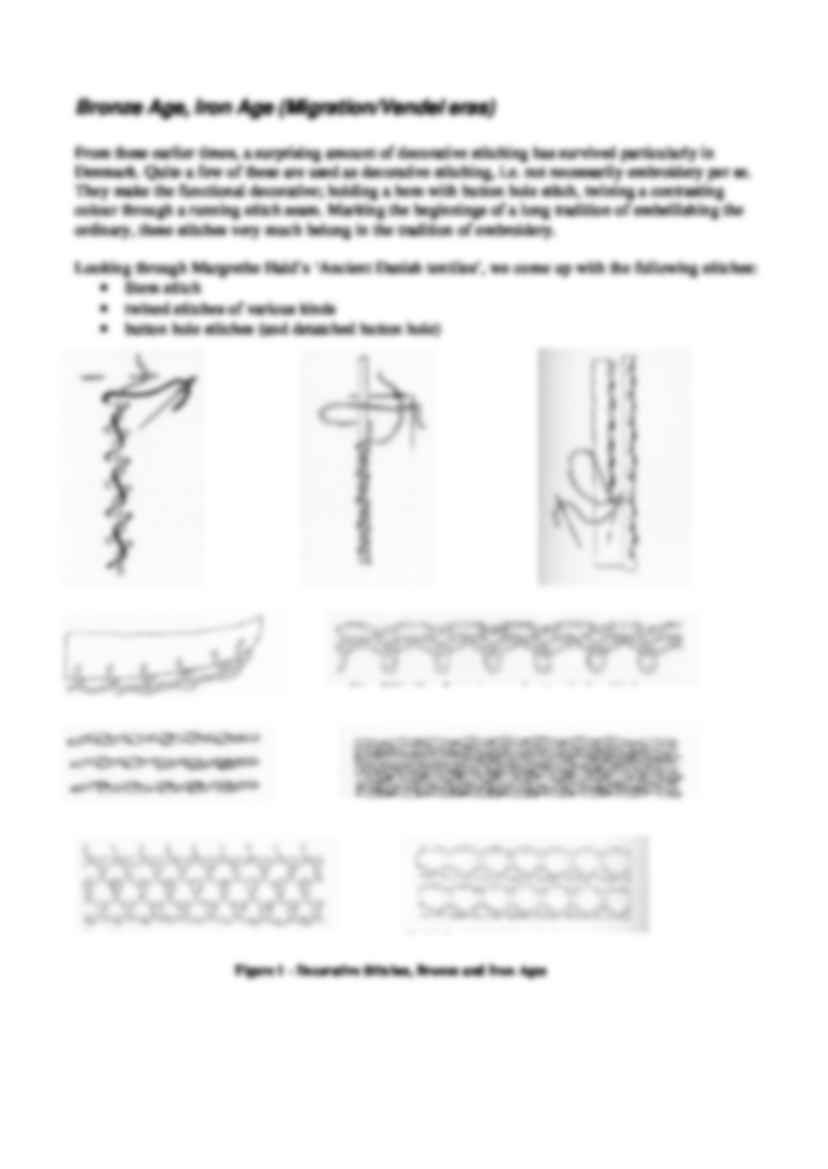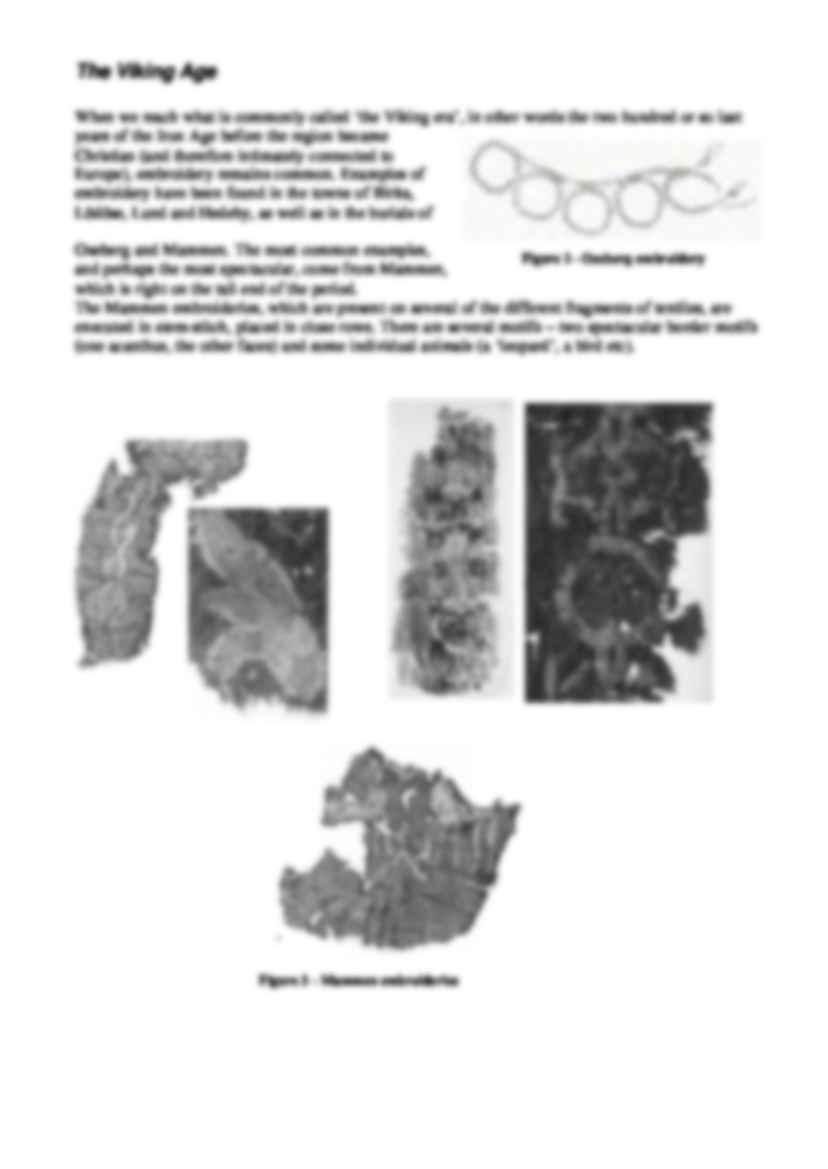To tylko jedna z 8 stron tej notatki. Zaloguj się aby zobaczyć ten dokument.
Zobacz
całą notatkę



Scandinavian Embroidery
By Baroness Marienna Jensdatter (Maggie Forest)
The topic of ‘medieval Scandinavian embroidery’ is obviously a rather wide one – as you’d expect.
“Scandinavia”, geographically speaking, consists of the Scandinavian peninsula, i.e. Sweden and
Norway these days and in period the southern parts were Danish. But in the SCA and in wider society,
“Scandinavia” means something rather larger, perhaps really a cultural sphere (its inhabitants
generally know this culture as ‘Nordic’), consisting of Sweden, Norway, Denmark, Iceland,
Greenland, the Færœs, and sometimes Finland, plus of course tributary areas in period such as the
Baltic areas, parts of Scotland, Ireland, and Normandy…
When researching these areas, consider how closely the cultural ties were at the time you’re looking at
– Iceland and the Færœs have always been very closely tied to Norway, but Ireland and Scotland have
seemed to manage to absorb invaders fairly quickly. Finland has always been special – while the west
coast became very firmly Swedish in that country’s great expansion north during the 13th Century,
ethnically and culturally the main part of it has always been very different from its western
neighbours, and the Baltic countries have always been closer to Finland than Sweden, despite Swedish
efforts to convince them otherwise.
Embroidery is an ancient art, and this is borne out in archaeology from very early on. The Nordic
countries are very rich in finds from an early age, largely thanks to the Danes favouring burials in oak
coffins, and also their later hobby of drowning people in bogs. But soil conditions have also helped –
clay rich soils are common, and given added weight are quite good at locking out oxygen, that great
feeder of textile-eating bacteria. Högo m, Oseberg and Mammen are examples of burial mounds that
have preserved textiles, embroidery included, thanks to the architect’s ambitious sizing of the mound
and the condition of the soil underneath.
An article of this format can only ever be an introduction to such a large topic. Therefore I have made
no attempt at building an exhaustive overview, nor indeed to show examples from every time and
place. Consider this instead an introduction – an appetizer if you like.
Below you’ll find a selection of documentable stitches and styles sorted by time period. At the end of
the article, I have included a bibliography, so that you can both study these examples further, and look
for other ones.
Bronze Age, Iron Age (Migration/Vendel eras)
From these earlier times, a surprising amount of decorative stitching has survived particularly in
Denmark. Quite a few of these are used as decorative stitching, i.e. not necessarily embroidery per se.
They make the functional decorative; holding a hem with button hole stitch, twining a contrasting
colour through a running stitch seam. Marking the beginnings of a long tradition of embellishing the
ordinary, these stitches very much belong in the tradition of
... zobacz całą notatkę






Komentarze użytkowników (0)